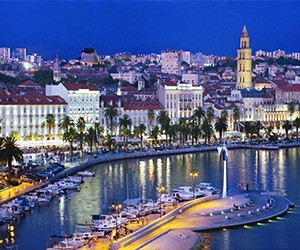Symbols of its enduring appeal as a sought-after destination, Croatia’s eight UNESCO World Heritage Sites, mostly in Dalmatia, are ready made for incentives and off-agenda programs.
Christianity was established as early as the 4th century in ancient Porec on the Istrian peninsula. Here, the Episcopal Complex of the Euphrasian Basilica earned UNESCO honors for being “the most integrally preserved early Christian cathedral complex in the region.”
Devoting nearly 10 percent of its land to national parks and other protected resources, eco-conscious Croatia has been called “Europe’s most beautiful garden.” Located in the central Lika region near Bosnia, Plitvice Lakes National Park is a paradise of interlinked lakes, caves and waterfalls accessed via forest paths and bridges.
In Sibenik on the central Dalmatian coast, The Cathedral of St James was constructed over the course of a century (1431 to 1535) by three successive architects each employing a different style. UNESCO recognized the structure for its blend of Northern Italian, Dalmatian and Tuscan forms, innovative construction and unique decorative elements.
Incorporating the citywide ruins of Diocletian's Palace, built between the late 3rd and the early 4th centuries A.D., the Historical Complex of Split’s UNESCO protection encompasses a Middle Ages’ cathedral, 12th and 13th century Romanesque churches, medieval fortifications, and palaces from across the ages.
Renowned as a luxury travel destination, the Adriatic island of Hvar, across from Split, also boasts the Stari Grad Plain. Greeks first colonized this fertile landscape in the 4th century BC, geometrically dividing it with stone walls and planting mainly grapes and olives. Twenty-four centuries later, the scene—and agricultural activity—carry on virtually unchanged.
Also in the Split region, UNESCO recognized the Historic City of Trogir as “a remarkable example of urban continuity.” Founded in the 3rd century BC, this island settlement’s original street layout dates to Hellenistic times, serving as the grid for the addition of fortifications, churches and other structures through the centuries.
Lastly, the Old City of Dubrovnik has proven resilient since being founded in the 7th century, surviving everything from an earthquake in 1667 to the siege of 1991-92. Evocative group venues include the Lovrjenac Tower at the western entrance to the Old City, and the Revelin Tower within this ancient citadel.




